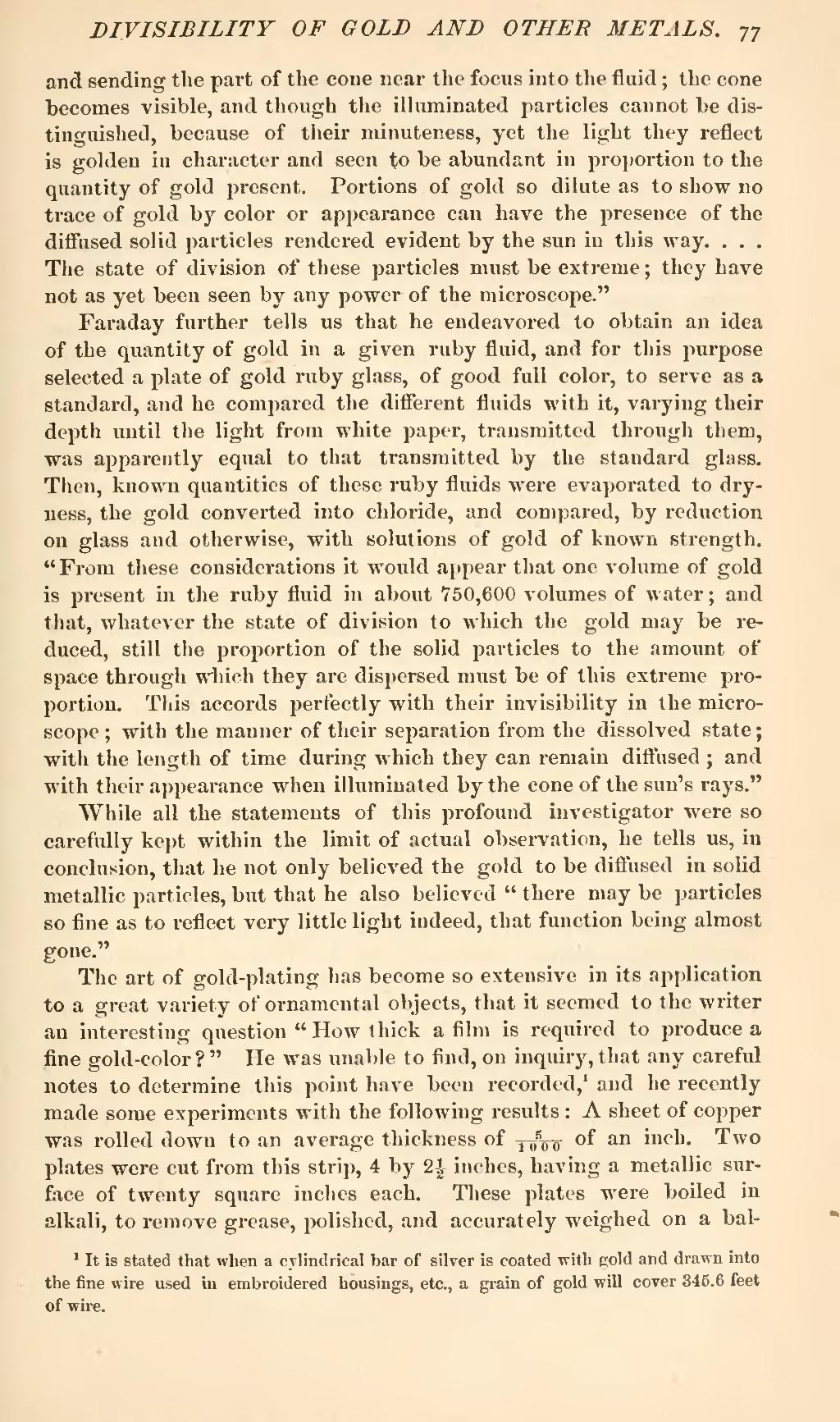and sending the part of the cone near the focus into the fluid; the cone becomes visible, and though the illuminated particles cannot be distinguished, because of their minuteness, yet the light they reflect is golden in character and seen to be abundant in proportion to the quantity of gold present. Portions of gold so dilute as to show no trace of gold by color or appearance can have the presence of the diffused solid particles rendered evident by the sun in this way. . . . The state of division of these particles must be extreme; they have not as yet been seen by any power of the microscope."
Faraday further tells us that he endeavored to obtain an idea of the quantity of gold in a given ruby fluid, and for this purpose selected a plate of gold ruby glass, of good full color, to serve as a standard, and he compared the different fluids with it, varying their depth until the light from white paper, transmitted through them, was apparently equal to that transmitted by the standard glass. Then, known quantities of these ruby fluids were evaporated to dryness, the gold converted into chloride, and compared, by reduction on glass and otherwise, with solutions of gold of known strength. "From these considerations it would appear that one volume of gold is present in the ruby fluid in about 750,600 volumes of water; and that, whatever the state of division to which the gold may be reduced, still the proportion of the solid particles to the amount of space through which they are dispersed must be of this extreme proportion. This accords perfectly with their invisibility in the microscope; with the manner of their separation from the dissolved state; with the length of time during which they can remain diffused; and with their appearance when illuminated by the cone of the sun's rays."
While all the statements of this profound investigator were so carefully kept within the limit of actual observation, he tells us, in conclusion, that he not only believed the gold to be diffused in solid metallic particles, but that he also believed "there may be particles so fine as to reflect very little light indeed, that function being almost gone."
The art of gold-plating has become so extensive in its application to a great variety of ornamental objects, that it seemed to the writer an interesting question "How thick a film is required to produce a fine gold-color?" He was unable to find, on inquiry, that any careful notes to determine this point have been recorded,[1] and he recently made some experiments with the following results: A sheet of copper was rolled down to an average thickness of 51000 inch. Two plates were cut from this strip, 4 by 212 inches, having a metallic surface of twenty square inches each. These plates were boiled in alkali, to remove grease, polished, and accurately weighed on a bal-
- ↑ It is stated that when a cylindrical bar of silver is coated with gold and drawn into the fine wire used in embroidered housings, etc., a grain of gold will cover 345.6 feet of wire.
